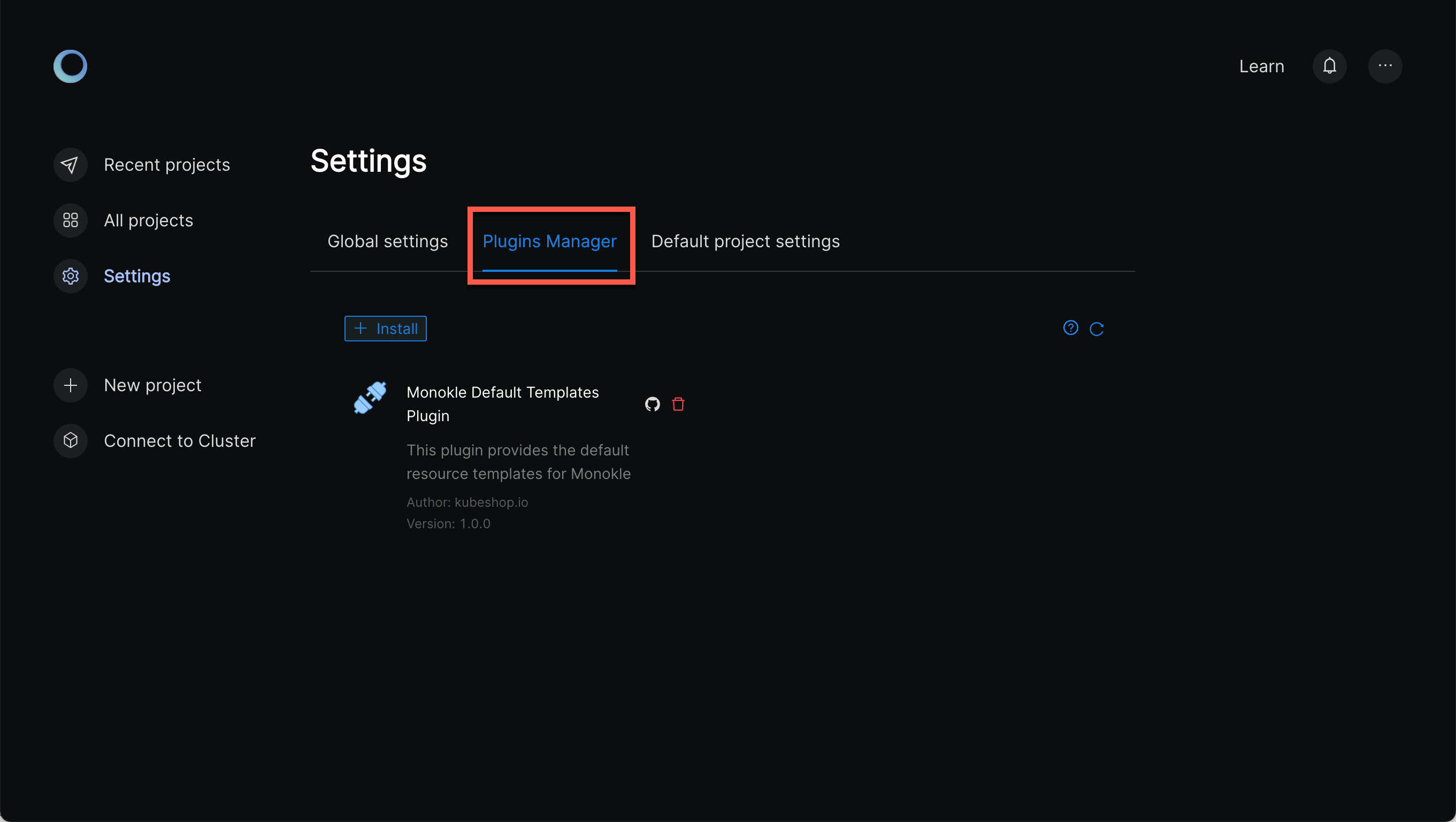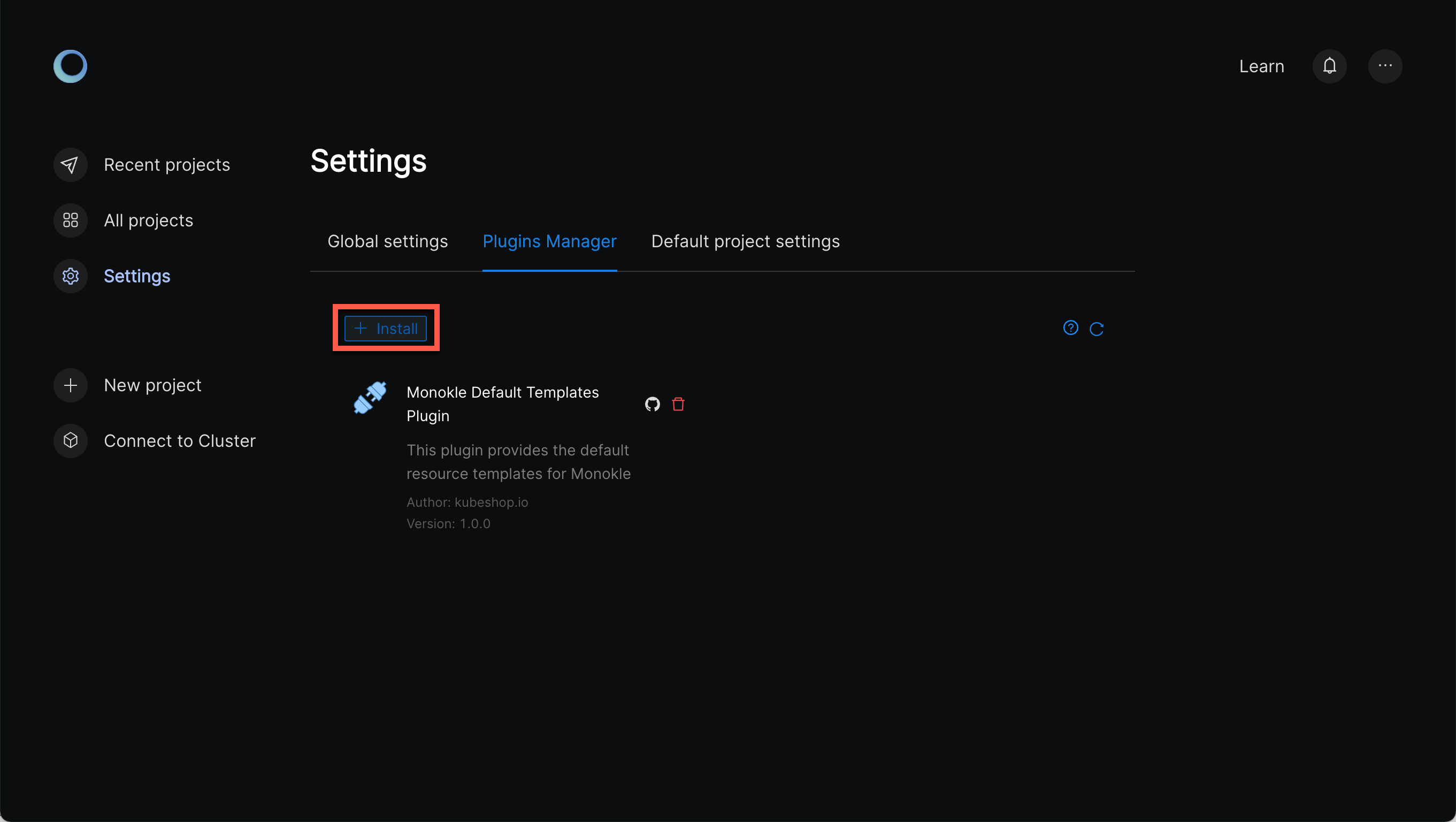What is a Plugin?
Simply, any GitHub repository that contains a package.json file (the plugin entry file) can be installed as a plugin if the entry file follows the structure of a Monokle Desktop plugin.
What is the structure of package.json for a valid Monokle Desktop plugin?
Monokle Desktop uses the following properties: name, author, version repository, description, and monoklePlugin.
The monoklePlugin property should be an object containing an array named modules.
Here’s an example of a package.json for a Monokle Desktop plugin:
{
"name": "My first plugin",
"description": "Hello world!",
"version": "1.0.0",
"author": "Kubeshop",
"repository": "https://github.com/kubeshop/monokle-default-templates-plugin",
"monoklePlugin": {
"modules": []
}
}
What types of modules does a Plugin support or what does a module look like?
With the release of 1.5.0 we are only supporting Template modules.
More module types will be added in future versions.
Each plugin may have multiple modules.
Here is how you can reference a template module:
"monoklePlugin": {
"modules": [
{
"type": "template",
"path": "<relative-path-to-template-folder>"
}
]
}
Read more about templates here.
How do I install a Plugin?
Open the Plugins manager from the top right icon:

- Click on the + Install button:

- A modal will appear asking for the Plugin URL:

- The URL must be a valid GitHub repository url in the format https://github.com/[user]/[repository].
- The primary branch should be
main. The plugin installer will search there for thepackage.jsonfile.
How do I manually install a Plugin?
This should be used only as a workaround for developing plugins.
On Mac:
- Copy your plugin folder to
/Users/<YourUser>/Libray/Application Support/monokle/monoklePlugins. - Reopen or reload Monokle Desktop (from Window -> Reload).
On Windows:
- Copy your plugin folder to
C:\Users\<YourUser>\AppData\Roaming\monokle\monoklePlugins. - Reopen or reload Monokle Desktop (from Window -> Reload).